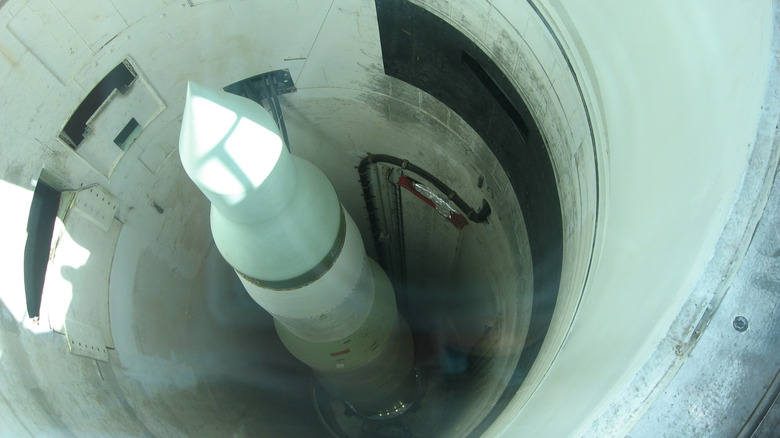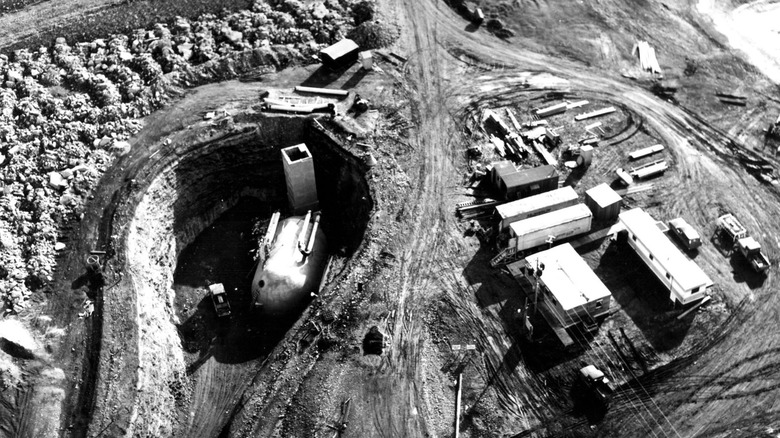How Many Missile Silos Are In Montana?
With tensions in the Middle East seemingly at an all-time high, it's only natural for people in the United States to wonder about the nuclear capabilities of our military. According to Statista, as of January 2024, the U.S. has in its arsenal 5,044 nuclear warheads, with approximately half of those housed at an underground munitions and maintenance storage complex located at the Kirtland Air Force base just southeast of Albuquerque, New Mexico.
While that 5,000+ number might seem like a staggeringly high amount, it's about one-tenth of what the U.S. once had during the Cold War — a total that once climbed as high as 31,255. With the bulk of America's total atomic arsenal sitting in the state of New Mexico, one might naturally wonder where the other half is kept. There are 150 Minuteman III intercontinental ballistic missile (ICBM) launch facilities basically hiding in plain sight amidst farms and ranches that dot Central Montana.
The 341st Missile Wing, headquartered at Malmstrom Air Force Base and part of the Air Force Global Strike Command, operates the missile facilities throughout Montana. However, it is only one of five states in the Great Plains region that houses these collective swarms of silos. A total of 400 ICBMs sit in 450 silos scattered across 40,000 square miles of Wyoming, Colorado (which also houses many abandoned silos), Nebraska (all under the control of the the 90th Missile Wing at Warren Air Force Base), North Dakota (operated by the 91st Missile Wing at Minot Air Force Base), and of course, Montana.
Montana and other Great Plains states can pack a punch
The Air Force chose Montana and other Great Plains states because of the vast swaths of mostly unpopulated land that existed there to build and bury all of the missile silos required for this particular weapon system. As a whole, they make up the United States' land-based nuclear defense system. The silos needed enough open space between them to survive a direct enemy strike yet allow the others to continue operating and launch retaliatory missiles.
Thus, each launch facility had to be located between 3.5 and 8.5 miles from one another but also remain between 3.5 and 17.5 miles from its launch control center. Montana's missiles first came online during the Cuban Missile Crisis on October 27, 1962. Today's intercontinental ballistic missiles (ICBMs) weigh 79,432 pounds, can reach speeds of 15,000 mph, and fly to a target at least 6,000 miles away. Upon impact, the nuclear blast would devastate anything within a 3.5-mile radius.
In 2024, the USAF launched a massive upgrade to replace the aging Minutemen III system with state-of-the-art Sentinel ICBMs. It's expected to take at least 10 years to complete and has an estimated cost (for now) of around $132 billion. Just the parts of this new system housed across 13,800 square miles of Montana will involve every underground launch facility, between eight and 15 aboveground missile alert facilities, 31 communications towers, 1,277 miles of new utility corridor, and 1,750 miles of existing right-of-way corridor (imagine all the concrete).

